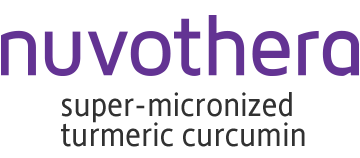What Does Inverse Psoriasis Look Like?
26 Apr 19

Your skin is the largest organ of your body. It protects your internal organs, keeping out bacteria and other harmful microbes while keeping in moisture. Unfortunately, our skin isn’t invulnerable and can suffer from a variety of issues, including psoriasis.
While psoriasis does affect the skin, it is much more than a cosmetic disease. It’s known to have a real impact on quality of life and overall health. It can be painful and uncomfortable and add extra strain to everyday tasks.
All good forms of treatment for inverse psoriasis start with diagnosis, and diagnosis often involves knowing what you’re looking at. Read on to learn more about inverse psoriasis and what it looks like.
Understanding Inverse Psoriasis
Psoriasis is an immune-mediated disease. Your immune system normally keeps your body healthy by protecting cells and attacking invasive bacteria, viruses, and fungi. However, with an immune-mediated disease, a malfunction in the immune system causes it to attack perfectly healthy cells. In the case of psoriasis, the immune system attacks healthy skin cells while signaling the production of new skin cells. This causes skin cells to grow on the surface of the skin before older cells can be shed, resulting in a buildup of skin.
With plaque psoriasis and other forms of the disease, this appears as thick, raised lesions that are dry, scaly, and inflamed.
What Inverse Psoriasis Looks Like
Inverse psoriasis involves the same process of overgrown skin cells, but with inverse psoriasis, these lesions appear on skin folds throughout the body. The lesions most commonly show up around the armpits, behind the knees, around the groin and inner thigh, and under the breasts.
The location of these lesions has a direct effect on their appearance. The combination of moisture, warmth, and friction in these skin folds results in lesions that appear smooth, shiny, and red. Unlike other forms of the disease that are characterized by scales, crusting skin, and pustular spots, inverse psoriasis does not produce dry or raised lesions.
Symptoms of Inverse Psoriasis
Inverse psoriasis lesions can still be painful and uncomfortable. Skin can feel itchy and irritated. The skin affected by inverse psoriasis is naturally thin and sensitive, and the lesions can cause the skin to grow more tender. Sweat and skin rubbing can result in further irritation. Sometimes creases in the skin folds can crack and break, which also increases the chance of infection. Inverse psoriasis can also increase the chance of yeast or fungal infections in the affected areas due to the moisture and warmth.
Inverse psoriasis is often accompanied by other forms of psoriasis, particularly plaque psoriasis, in other areas of the body. Along with the raised, scaly patches, this may include:
- Itchy, burning, sore skin
- Nails that appear thick, pitted, or ridged
- Stiff, swollen, aching joints (a sign of psoriatic arthritis)
The symptoms of inverse psoriasis often come in waves or cycles. Psoriasis sufferers may experience a few weeks or months of symptoms followed by a period where symptoms subside or go into remission. The severity of these symptoms can also vary from person to person.
Treating Inverse Psoriasis
Most treatments for inverse psoriasis start with a topical cream that can be rubbed onto lesions. Steroid creams are the most common topical treatment and are designed to reduce inflammation. However, it’s important to use steroid creams and ointments as prescribed. Areas affected by inverse psoriasis are thin and more rapidly absorb the medication. Over-applying steroid creams can cause skin in these areas to become even thinner and create stretch marks. Your doctor should monitor your progress with topical treatments and adjust as necessary.
Along with topical treatments, your doctor may prescribe light therapy, which involves the use of controlled amounts of UV radiation for set periods of time. This can help to slow down and control the growth rate of skin cells.
For more severe forms of inverse psoriasis that don’t seem to react to topical treatments or phototherapy, your doctor may prescribe systemic drugs. These most often work by altering how your immune system works to regulate the immune response. However, these are only prescribed for short periods as they usually come with severe side effects.
Talk to your doctor to determine the best treatment for your psoriatic lesions and other needs. Along with prescription treatments, make sure you take steps to increase your personal and emotional comfort. Wear breathable fabrics and loose clothes that won’t rub your lesions and cause further irritation and inflammation, and take some time to be kind to yourself.
Sources:
- https://www.mayoclinic.org/diseases-conditions/psoriasis/symptoms-causes/syc-20355840
- https://www.healthline.com/health/inverse-psoriasis
- https://www.everydayhealth.com/psoriasis/living-with/inverse-psoriasis/
- https://www.psoriasis.org/about-psoriasis/types/inverse

